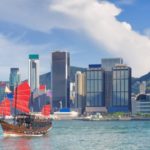At the Intercontinental New York Barclay, concierge Adrian Proietti has spent 10 years advising visitors about how to make the most of their time in the city that never sleeps. Here he offers expert guidance for business travelers.
What should business travelers pack when visiting your city?
Walking is often the most efficient way to get around, so proper footwear is a must. Pack light shoes for spring and summer and durable shoes for fall and winter, when sidewalks may be wet and icy. Locals often wear boots or other utilitarian footwear for the walk and carry stylish shoes to change into once they get to their destination. Anyone who has encountered a crosswalk puddle in February will understand the rationale.
It’s smart to carry some cash with you; some local restaurants have a strict cash-only policy. Make sure you pack your smartphone charger, and be prepared to carry it with you so you can charge up while you’re in meetings. You’ll rely on your phone for navigation, updates on New York’s fickle weather and information on restaurants and attractions—all of which will drain your phone battery quickly. Finally, New York City has won awards for our great-tasting tap water, primarily sourced from reservoirs north and west of the city—so, bring a reusable water bottle and take advantage of water fountains you’ll find just about everywhere.
What are your top restaurant recommendations for a business lunch or dinner?
With its prime location, Casa Lever (390 Park Ave. at 53rd Street; Ph: 212-888-2700) is upscale but not pretentious. This modern Italian restraurant has a varied menu and one of the best outdoor gardens in Manhattan’s Midtown East area. Smith & Wollensky (49th Street and Third Avenue; Ph: 212-753-1530) has been an Eastside mainstay for over 40 years. It’s known for sumptuous steaks and generous portions, although the menu also offers non-meat options. You’ll find some outdoor tables here, too. Midtown East has some of the best Japanese restaurants in the city, and Sushiden (19 E. 49th St. at Madison Avenue; Ph: 212-758-2700) is a perfect spot for a business meeting. The sushi and sashimi are authentic. The setting is traditional, no frills Japanese with top-notch service. And the location is central and convenient.
What’s one thing that always surprises guests about your hotel?
The Barclay, built in 1926 as part of Grand Central Terminal’s urban design plan, played a pivotal role in Manhattan’s Midtown East renaissance. Its fashionable residential atmosphere made it a favorite among New York socialites. Today, we focus not only on style, but also on sustainability. We’re aligning our operational practices with the United Nation’s Sustainable Development Goals, and our hotel staff is dedicated to making a difference in our city and the world.
If business travelers only have a few hours for leisure, what must they see in your city?
You can take a quick trip from our hotel to some of the best-known landmarks in Manhattan: Rockefeller Center, the Museum of Modern Art (MoMA), Grand Central Station, the Fifth Avenue shopping district, Times Square, Central Park, the United Nations, Bryant Park and the Empire State Building. All are no more than a 20-minute walk from our front door.
What’s the best option for outdoor exercise in your city?
Central Park has well-marked trails for runners. Our city also has one of the largest bike share programs in the U.S., but stay alert on our heavily trafficked streets. One of the best things about New York is that you can get exercise throughout your day: Walking is a great way to get to destinations and explore the city along the way.
Business know-how

Concierge Adrian Proietti’s top tips for getting business right in New York City:
Tip 1: Be prepared to tip for almost any service; the standard amount is generally 20% of your bill before taxes.
Tip 2: Orient yourself to the city so you can arrive right on time for meetings. It’s impolite to arrive late, but New Yorkers also don’t show up very early for appointments.
Tip 3: The dress code for doing business in New York City can range from expensive suits for Wall Streeters to stylish business casual clothing at technology and creative firms. If possible, investigate what’s appropriate attire for the offices you’ll be visiting. When in doubt, dress well—and always avoid T-shirts, baseball caps and sneakers.

